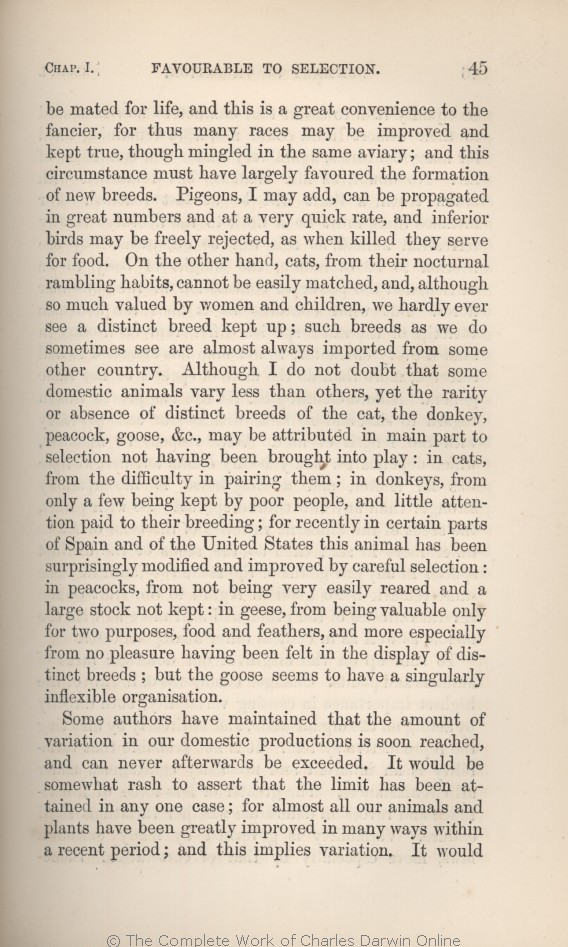be mated for life, and this is a great convenience to the fancier, for thus many races may be
improved and kept | improved and kept 1861 1866 1869 1872 |
| kept 1859 1860 |
| ..... 1861 1866 1869 1872 | | improvement and 1859 1860 |
| easily matched, 1861 1866 1869 1872 | | matched, 1859 1860 |
| hardly ever 1859 1860 1861 1866 1869 | | rarely 1872 |
| kept 1859 1860 1861 1866 1869 | | long kept 1872 |
| country. 1861 1866 1869 1872 | | country, 1859 1860 |
| ..... 1861 1866 1869 1872 | | often 1859 1860 |
| ..... 1861 1866 1869 1872 | | from 1859 1860 |
| ..... 1861 1866 1869 1872 | | islands. 1859 1860 |
| them; 1859 1860 1869 1872 | | them: 1861 1866 |
| for recently in certain parts of Spain and of the United States this animal has been surprisingly modified and improved by careful selection: in 1861 1866 1869 |
| in 1859 1860 |
| for recently in certain parts of Spain and of the United States this animal has been surprisingly modified and improved by careful selection; in 1872 |
| kept: 1861 1866 1869 | | kept; 1859 1860 1872 |
| breeds; but the goose seems to have a singularly inflexible organisation. 1861 1866 1869 |
| breeds. 1859 1860 |
| breeds; 1872 |
| 1 blocks not present in 1859 1860 1861 1866 1869; present in 1872 | | but the goose, under the conditions to which it is exposed when domesticated, seems to have a singularly inflexible organisation, though it has varied to a slight extent, as I have elsewhere described.
|
|









